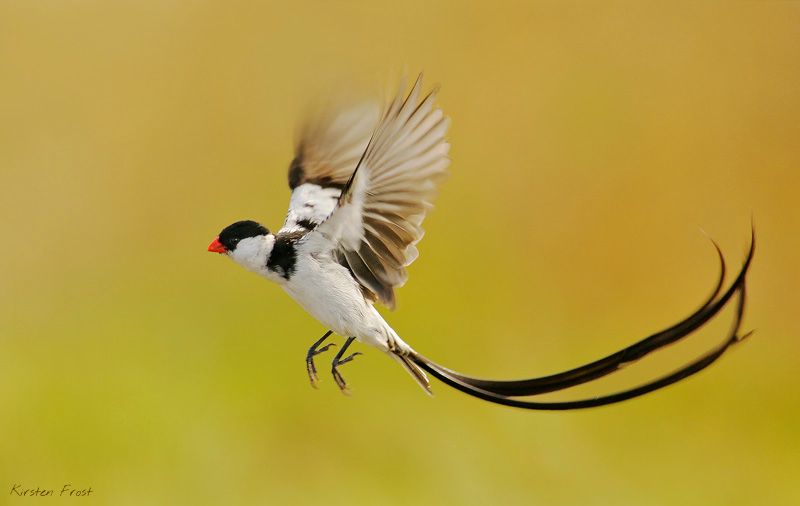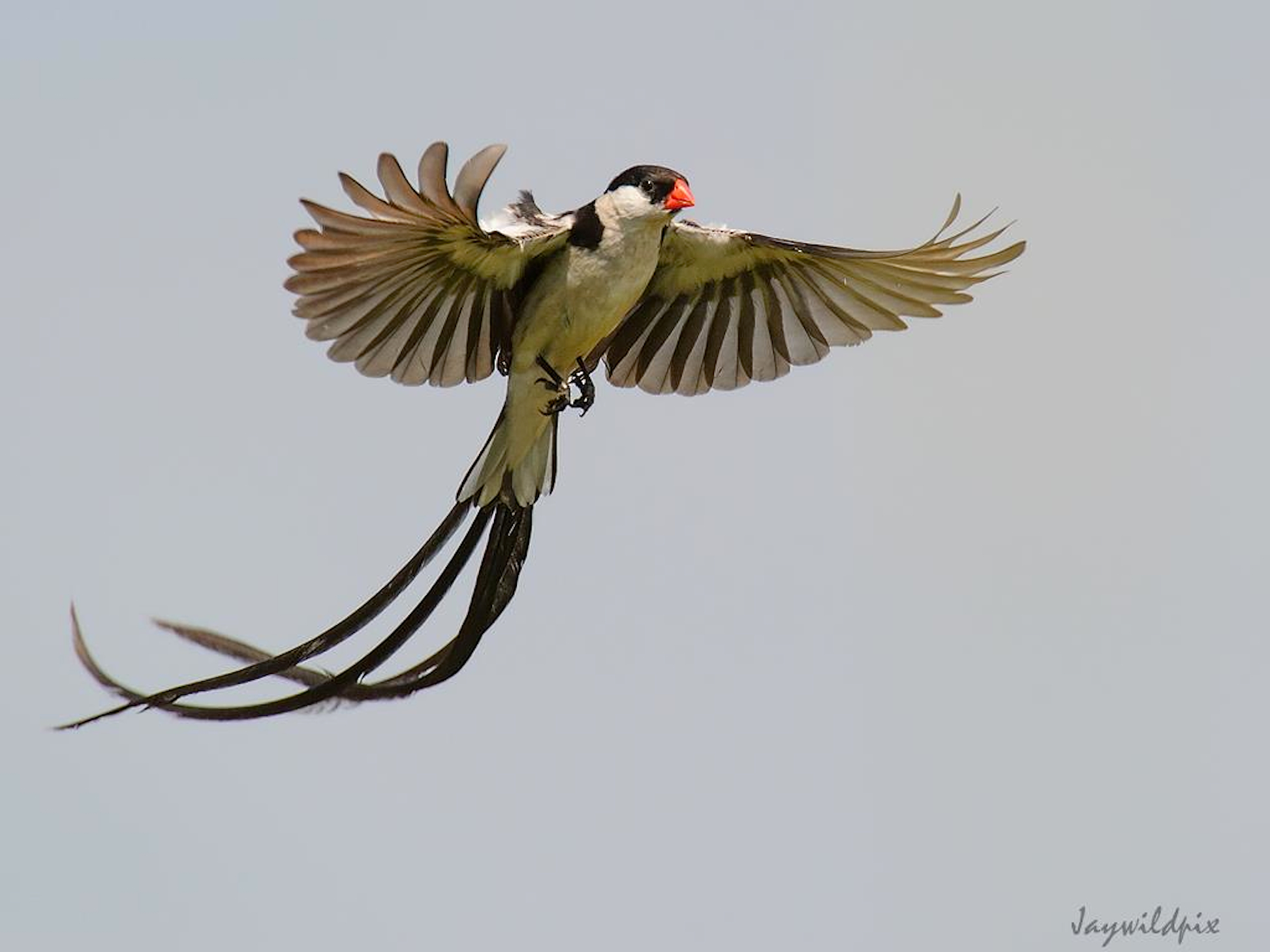
Vidua macroura
SUBFAMILY
Viduinae
TAXONOMY
Fringilla macroura Pallas, 1764, ‘East Indies’ = Angola.
OTHER COMMON NAMES
English: King-of-six; French: Veuve dominicaine; German:
Dominikanerwitwe; Spanish: Viuda de Cola Aguda.
PHYSICAL CHARACTERISTICS
4.7–5.1 in (12–13 cm), male with long tail 10.2–13.4 in (26–34
cm); female 0.5–0.6 oz (14–16 g), male 0.5–0.7 oz (14–19 g).
Female and non-breeding male, brownish upperparts with
broad black stripes on top of head, buff to white underparts.
Bill brownish red. Breeding male, black and white with four
long, black central tail feathers. Bill bright red. Juvenile plain
brown above, buff below.
DISTRIBUTION
Sub-Saharan Africa. Introduced to Hawaii but apparently now
extinct.
OTHER COMMON NAMES
French: Tisserin йcarlate; German: Scharlachweber; Spanish:
Tejedor de Cabeza Roja.
PHYSICAL CHARACTERISTICS
5.9–6.7 in (15–17 cm); female 0.7 oz (20 g); male 0.9 oz (25 g).
Breeding male has head, breast, and upper back scarlet, upperparts
otherwise gray, underparts white. Wing edged yellow or
red in different population; some also have black patch around
eye. Bill red, eye red. Female and non-breeding male, scarlet
replaced by dull orange on upperparts, below yellow to buff.
Bill pink to orange, eye brown. Juvenile like female.
DISTRIBUTION
Senegal east to Somalia, south to Namibia, Botswana, and
northeastern South Africa.
HABITAT
Woodland and acacia savanna, gardens.
BEHAVIOR
Solitary or in pairs, joins mixed-species flocks. Local movements
during dry season. May stay near, and roost in, old
nests.
FEEDING ECOLOGY AND DIET
Mainly insects, spiders, some fruit and seeds. Forages in foliage,
on branches and creepers; hawks flying insects.
REPRODUCTIVE BIOLOGY
Often solitary, monogamous or polygynous; sometimes several
males in same tree. Nest built by male, at same site in successive
seasons, so that several nests may be close together.
Retort-shaped structure, woven from twigs and mid-ribs of
leaves with rough appearance; long vertical entrance spout.
Suspended from tree, often one in which raptor is nesting. Female
lines nest. Lays one to four eggs from late winter through
Resident
Anaplectes rubriceps
Resident
Vidua macroura
HABITAT
Open savanna and grassland, farmland, gardens.
BEHAVIOR
Male sings from perch, but does not imitate songs of host
species. When female arrives, bounces in the air with tail flipping
up and down while singing. Aggressive towards other
males, but also to other species. Non-breeding birds gregarious,
forming small flocks of 20–30 birds, often mixed with
other small seed-eaters.
FEEDING ECOLOGY AND DIET
Mainly seeds, also some insects. Collects most food on the
ground. Scratches with backward hops to unearth buried
seeds.
REPRODUCTIVE BIOLOGY
Brood parasite, polygynous. Lays one to two eggs per nest, removing
host egg for each egg added. Incubation about 11 days,
fledging about 20 days. Most frequent host is common waxbill
(Estrilda astrild), also other waxbills and occasionally warblers.
Host and parasite young reared together.
CONSERVATION STATUS
Not threatened; widespread and common.
SIGNIFICANCE TO HUMANS
None known; annoys those who put out birdseed, as breeding
male pin-tailed whydah will attempt to drive all other birds
away from feeding site.
Other popular Animals
Photo Gallery of - Pin-tailed whydah




 Animalia Life
Animalia Life